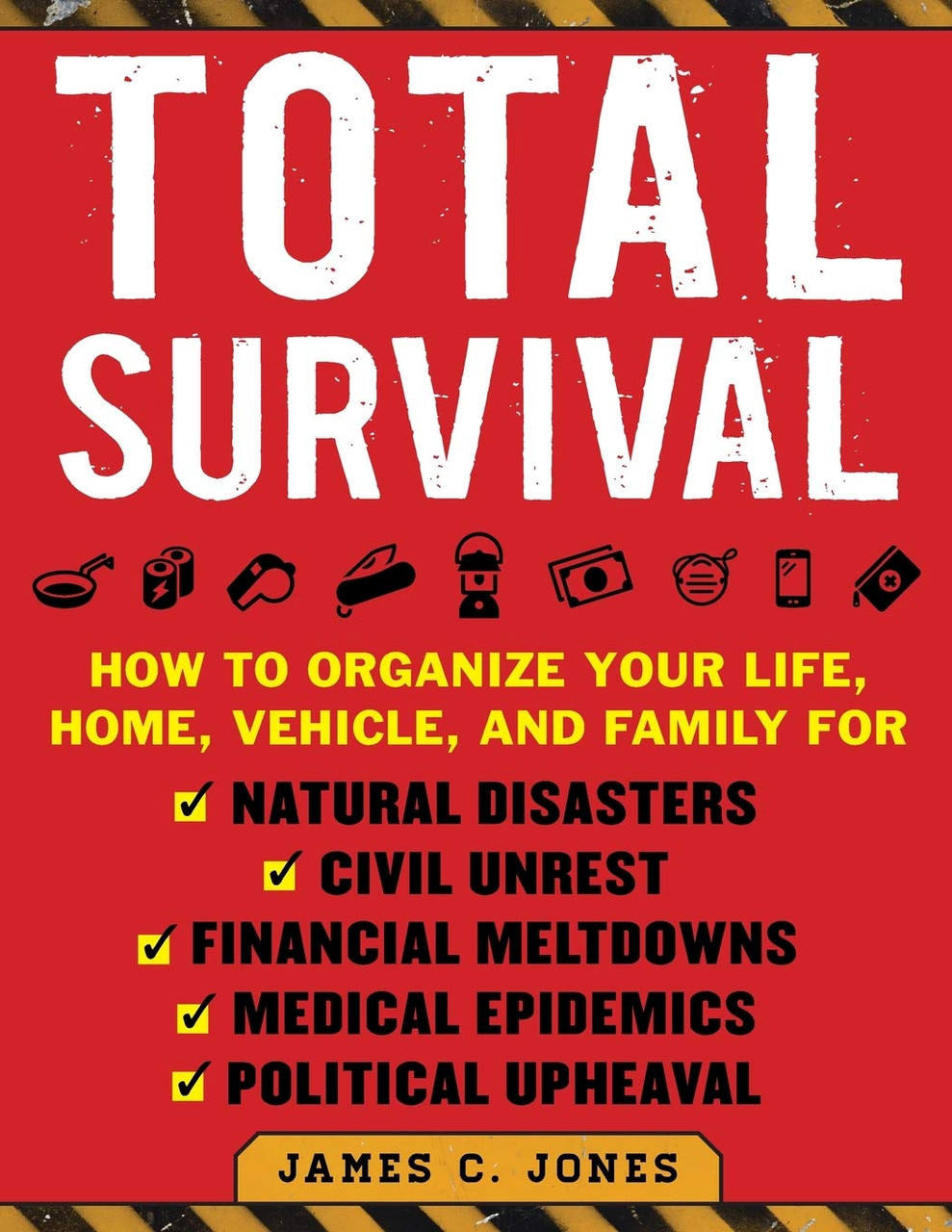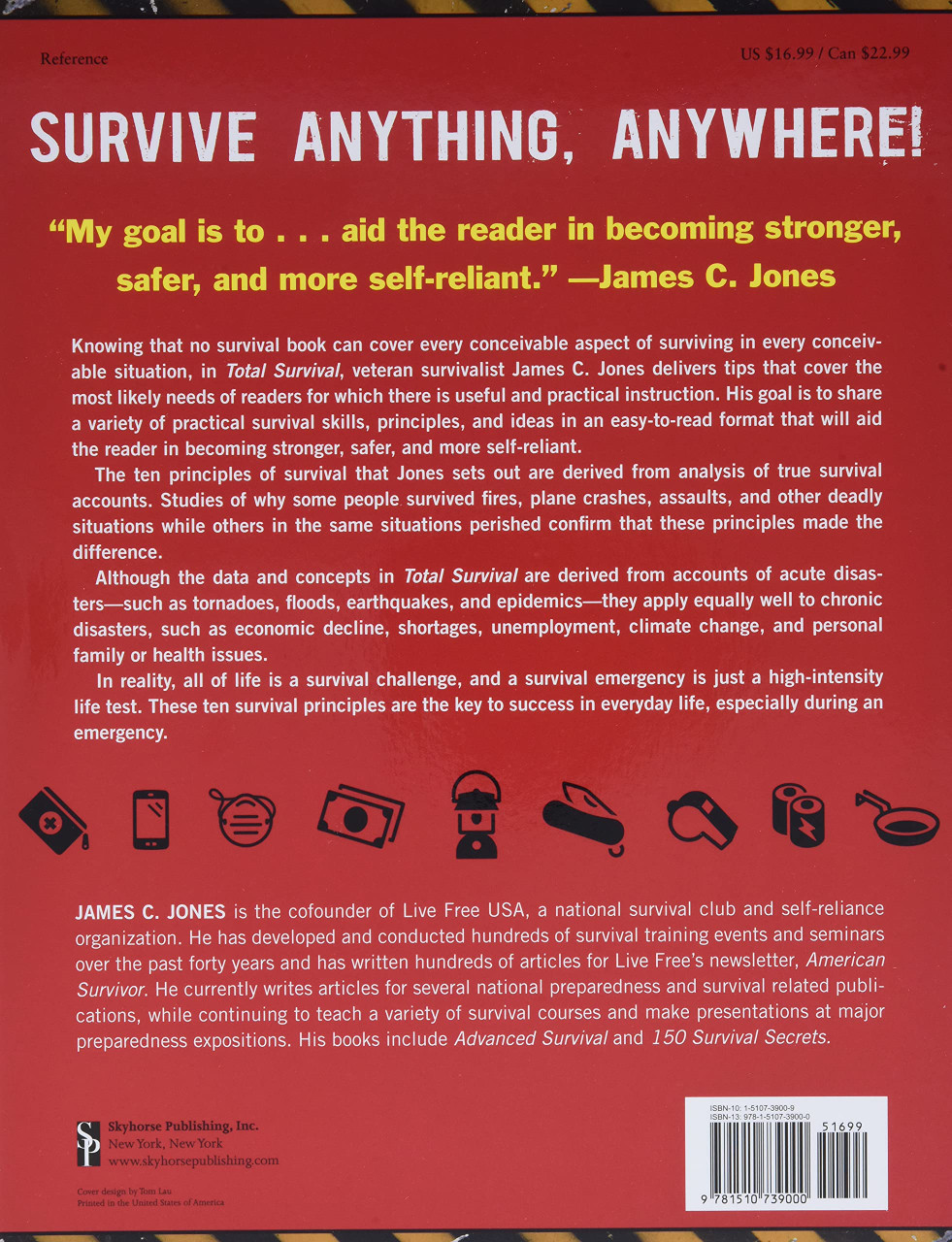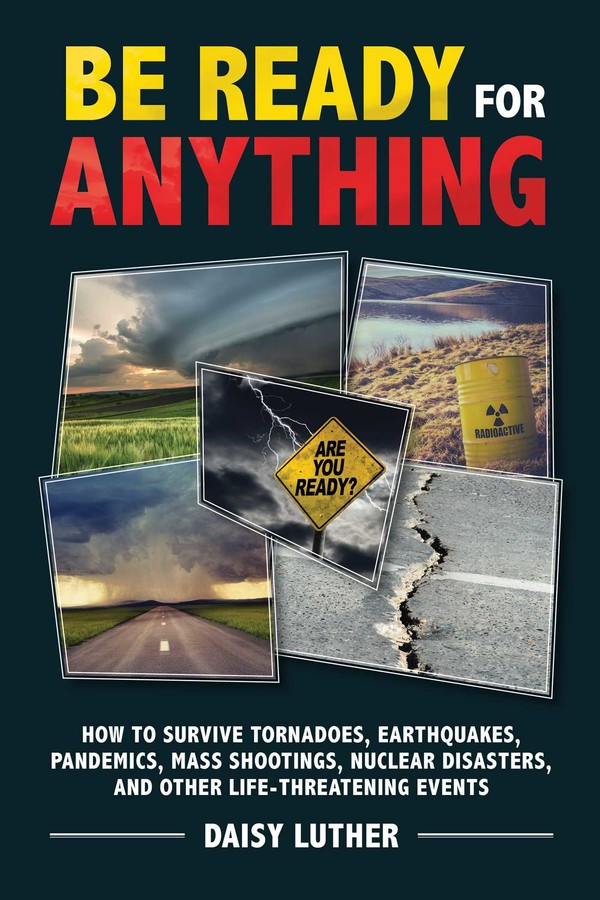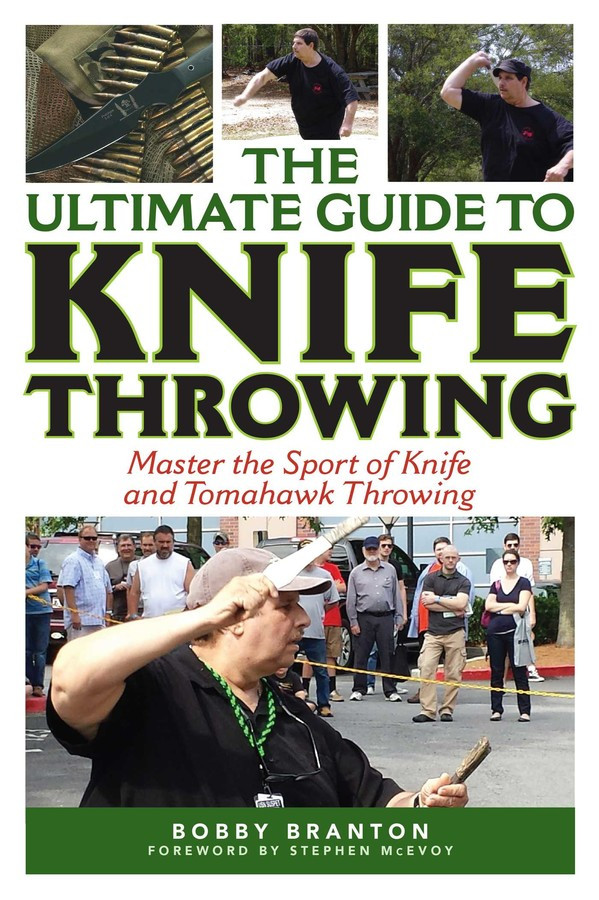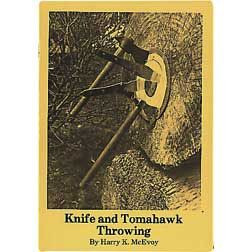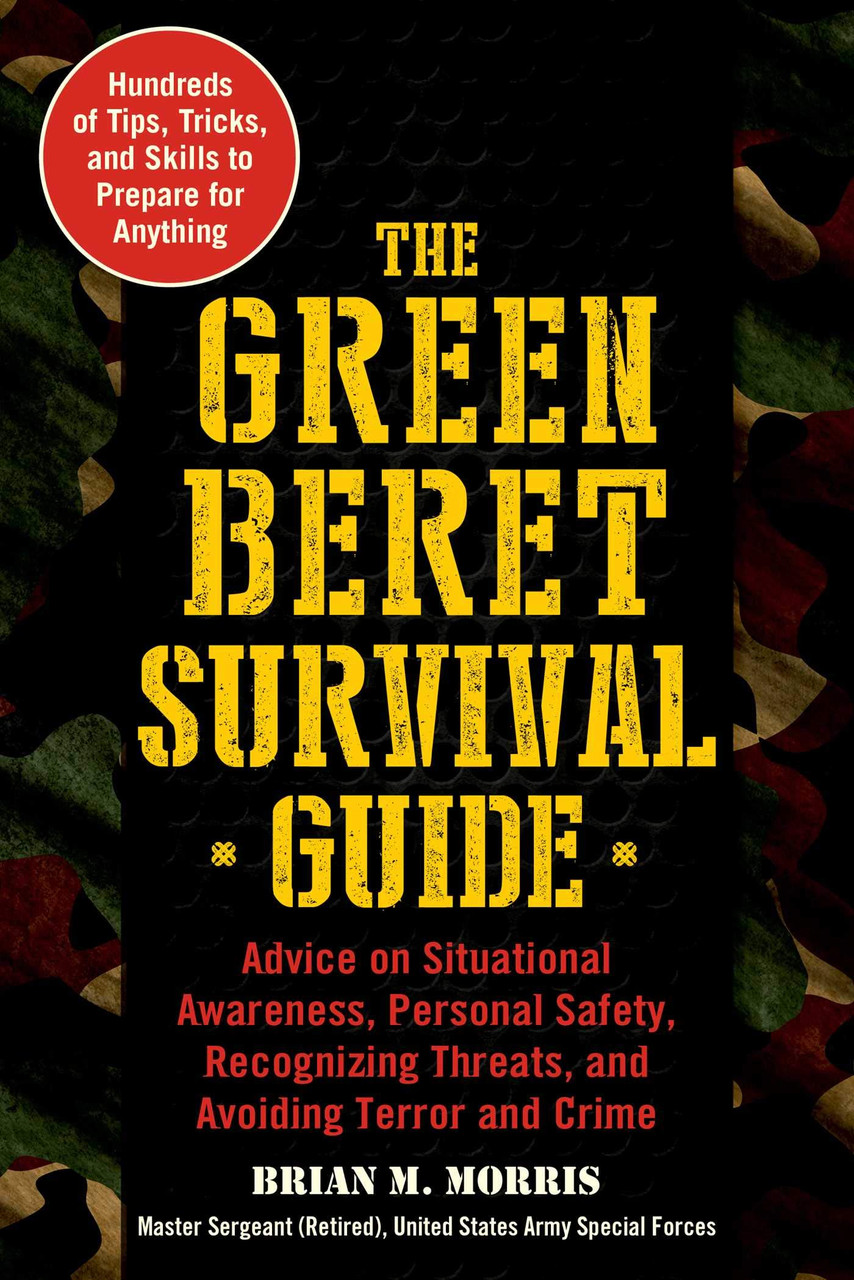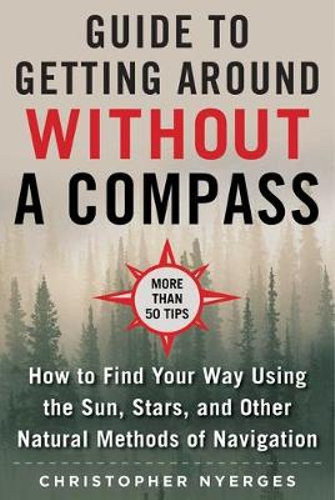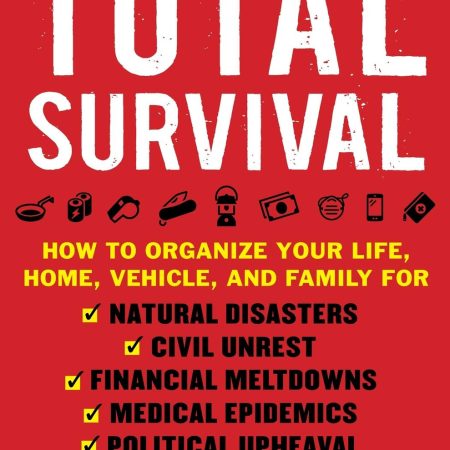| Content | In Total Survival, veteran survivalist James C. Jones delivers tips that cover the most likely needs of readers and for which there is useful and practical instruction. His goal is to share a variety of practical survival skills, principles, and ideas in an easy-to read format that will aid the reader in becoming stronger, safer, and more self-reliant.
The ten principles of survival that Jones sets out are derived from analysis of true survival accounts. Studies of why some people survived fires, plane crashes, assaults, and other deadly situations while others in the same situations perished confirm that these principles made the difference. His table of contents includes:
- 1: Ten Principles of Survival (including Anticipate and Stay Calm)
- 2: Ten Disasters to Prepare For (including Home Fire While Asleep and Home Invasion by Intruder).
- 3: Ten Items for the Prepared Home (including Emergency Plans and Packs)
- 4: Ten Items You Should Always Carry (including a Miniature LED flashlight and a Whistle)
- 5: Ten Things You Should Have in Your Survival Pack(s) (including Water and Weapons)
- 6: Ten Ways to Avoid and Survive Street Crime (including Carjacking and Active Shooter)
- 7: Ten Self-Defense Moves You Should Know (including Front Choke Counter and Handgun Defenses)
- 8: Ten Medical Skills You Should Know (including Cardiac Arrest and Shock)
- 9: Ten Ways to Gather and Purify Water (including Boiling Water and Distillation)
- 10: Ten Ways to Gather and Store Food (including Foraging and Trapping)
- 11: Ten Ways to Start and Maintain a Fire (including Fire by Flit and Steel and Fire by Solar Heat
- 12: Ten Shelters You Should Know How to Build (including Fallout Shelters and Snow Shelters)
- 13: Terrorism
Although the data and concepts in Total Survival are derived from accounts of acute disasters—such as tornadoes, floods, earthquakes, and epidemics—they apply equally well to chronic disasters, such as economic decline, shortages, unemployment, climate change, and personal family or health issues.
In reality, all of life is a survival challenge, and a survival emergency is just a high-intensity life test. These ten survival principles are the key to success in everyday life, especially during an emergency.
| Will you be a ready for a dozen different kinds of disasters, including hurricanes, civil unrest, mass shootings, and wildfires?
You want to be prepared for whatever emergencies come your way. While prepping for a dozen different disasters may sound like a daunting task, there’s good news.
Preparing for a wide variety of disasters requires the same basic supplies as preparing for one or two. For each event, there will be some special steps, unique information, and precautions you need to take, along with a few additional supplies, but your essentials will be the same. Learn how to prepare for:
- Earthquakes
- Tornadoes
- Hurricanes
- Winter Storms
- Wildfire Evacuations
- Pandemics
- Nuclear Disasters
- Mass Shootings
- Civil Unrest
- Economic Crises
- And More!
With directions, helpful appendices, checklists, and general guidance to getting prepped, this book will get you away from panic and straight to safety. | If you’ve ever wanted to learn how to throw knives or tomahawks, look no further than The Ultimate Guide to Knife Throwing. This comprehensive guide is perfect for everyone from novices who have never picked up a knife to seasoned knife and tomahawk throwers looking to compete in their first tournament.
Bobby Branton has been a foremost expert in the field of knife throwing and handcrafting custom throwing knives for over thirty years and shares his expertise here with easy step-by-step directions. Branton shows readers two methods of throwing knives that are most popular with knife throwers today. He will also share his extensive knife-making experience by showing readers how to make a quality throwing knife on a budget.
In addition to improving technical skills, this guide will also give readers a brief history of the sportcovering everyone from the pioneers of the sport to today’s modern impalement artists. This book will give you the tools needed to learn everything from the basics of knife and tomahawk throwing to how to start your own knife and tomahawk throwing club. Readers will learn how to construct targets, learn the basic stance, basic knife and tomahawk grips, and the mechanics of throwing knives and tomahawks. Branton’s guide gives an in-depth look at this fast-growing sport, with a strong emphasis placed on safety.
The Ultimate Guide to Knife Throwing is a must for anyone interested in the sport of knife throwing.
| Knife and Tomahawk Throwing by Harry K. McEvoy. 28 pages. | Features of Pocket Guide to Emergency First Aid from Pocket Guides Publishing:
- Sections dealing with all kinds of medical emergency situations
- Great companion guidebook to the Pocket Guide to Outdoor Survival
- Spiral binding lets pages lay flat for easy reading in the field
- Side tabs let you find the right chapter quickly
- Fully waterproof (tested by soaking in water for months on end), and astonishingly durable - dirt-proof, tear-proof, wind-proof, kid-proof.
- Pages are made of specially formulated, heat-treated, PVC plastic - polished, resin-coated polyvinylchloride polymer). Pages feature:
- Bright white printing surface - all printing is clear and precise
- Virtual indestructibility - the pages can't rip or tear, and the corners won't bend over
- Flexibility - pages can bend without breaking
- Washable surface - just wipe clean after use or wash in water
- Steel rule die cut with polished edges - the corners won't poke you while in your hand or in your pocket, as often happens with plastic printed materials
- Will not warp, fade or deteriorate. (Keep out of direct sunlight for prolonged periods - nothing can prevent the sun's ultraviolet rays from "yellowing" any kind of paper or plastic. Under normal conditions it will take years of use for these Pocket Guides to "yellow", and even then they will remain clear and perfectly readable!)
| Today's society is one in which we, as individuals, are constantly barraged by the threat of domestic terrorism. The ever-present fear for your safety and the safety of those we love can overwhelm you if you aren’t sure how to protect yourself. Luckily, distinguished combat veteran Brian M. Morris's Green Beret Survival Guide is here to help ease your fears.
Using his firsthand knowledge from the field as a Green Beret, Morris concisely outlines the steps that are necessary towards increasing one’s personal safety. Over the course of several chapters, Morris describes the importance of situational awareness, meaning staying alert, being aware of your surroundings, and understanding the reality of threats that you may face in any given situation. An individual with good situational awareness never takes anything for granted and makes security a part of his or her daily routine. By being observant and practicing several different methods of observation, one can avoid falling prey to terrorist, thieves, and other criminals.
|
